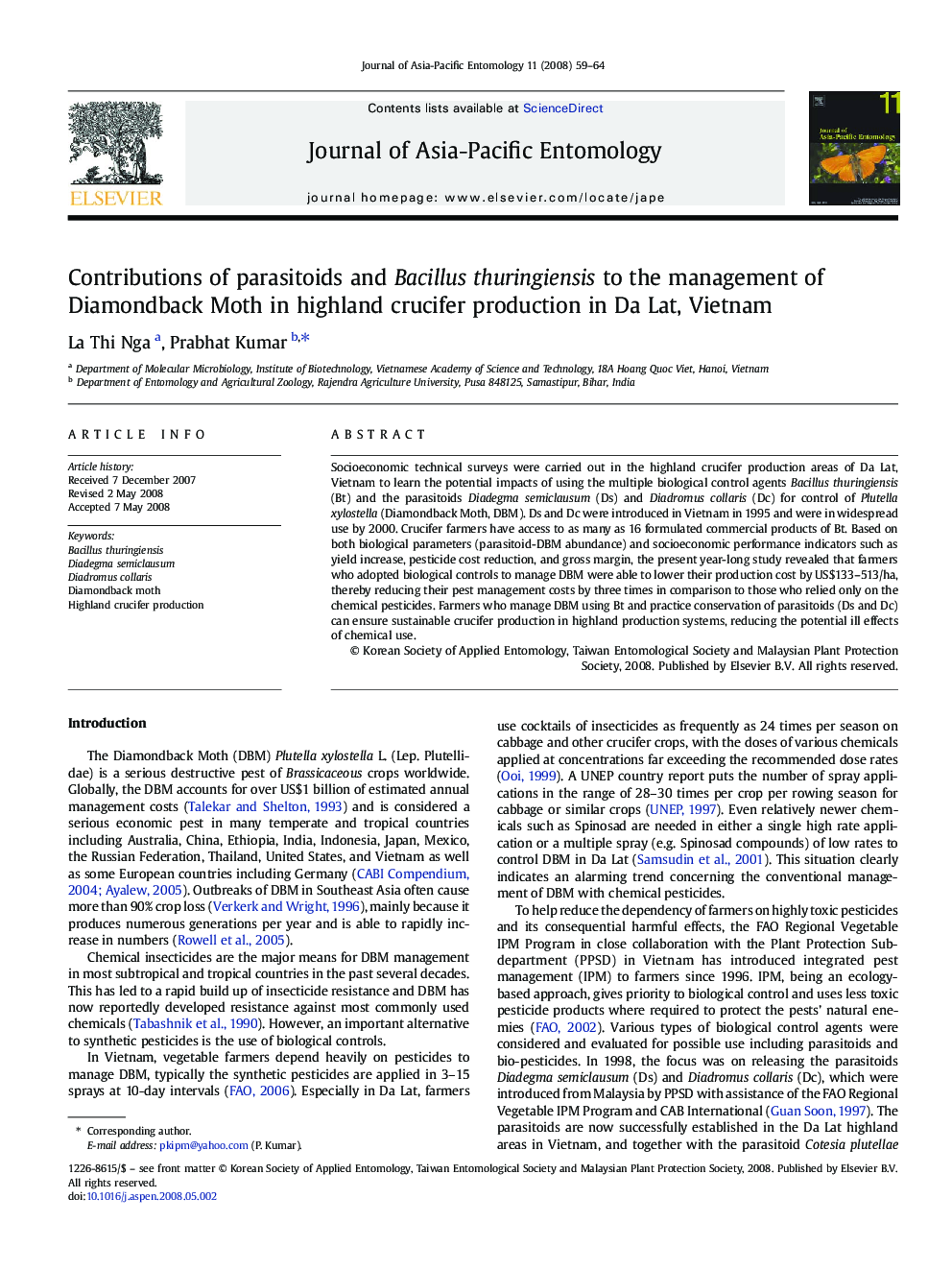| Article ID | Journal | Published Year | Pages | File Type |
|---|---|---|---|---|
| 4525073 | Journal of Asia-Pacific Entomology | 2008 | 6 Pages |
Abstract
Socioeconomic technical surveys were carried out in the highland crucifer production areas of Da Lat, Vietnam to learn the potential impacts of using the multiple biological control agents Bacillus thuringiensis (Bt) and the parasitoids Diadegma semiclausum (Ds) and Diadromus collaris (Dc) for control of Plutella xylostella (Diamondback Moth, DBM). Ds and Dc were introduced in Vietnam in 1995 and were in widespread use by 2000. Crucifer farmers have access to as many as 16 formulated commercial products of Bt. Based on both biological parameters (parasitoid-DBM abundance) and socioeconomic performance indicators such as yield increase, pesticide cost reduction, and gross margin, the present year-long study revealed that farmers who adopted biological controls to manage DBM were able to lower their production cost by US$133-513/ha, thereby reducing their pest management costs by three times in comparison to those who relied only on the chemical pesticides. Farmers who manage DBM using Bt and practice conservation of parasitoids (Ds and Dc) can ensure sustainable crucifer production in highland production systems, reducing the potential ill effects of chemical use.
Related Topics
Life Sciences
Agricultural and Biological Sciences
Animal Science and Zoology
Authors
La Thi Nga, Prabhat Kumar,
